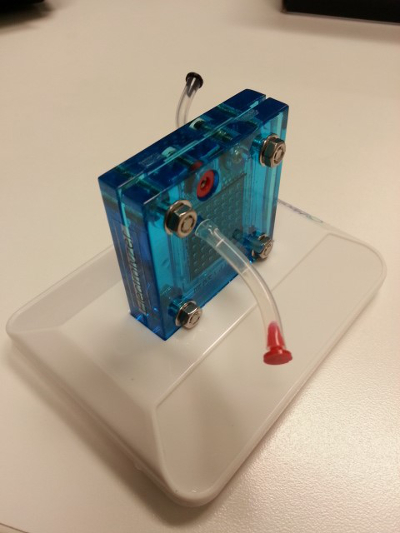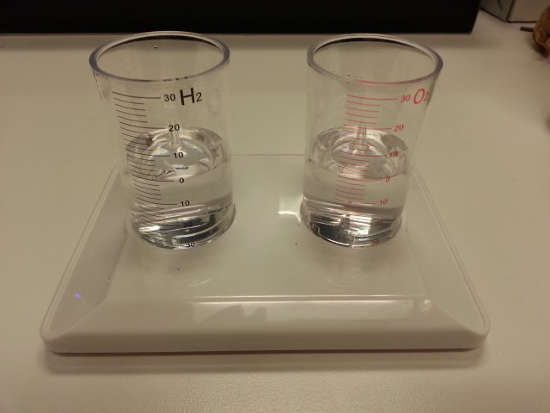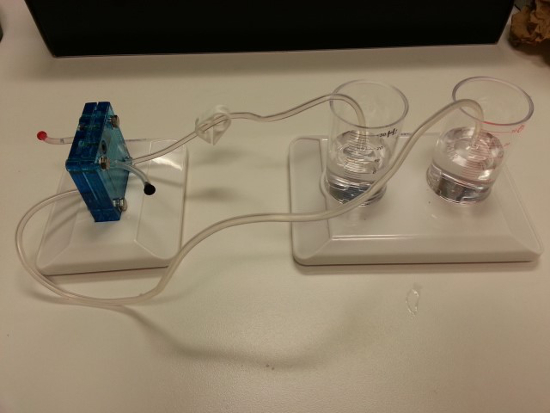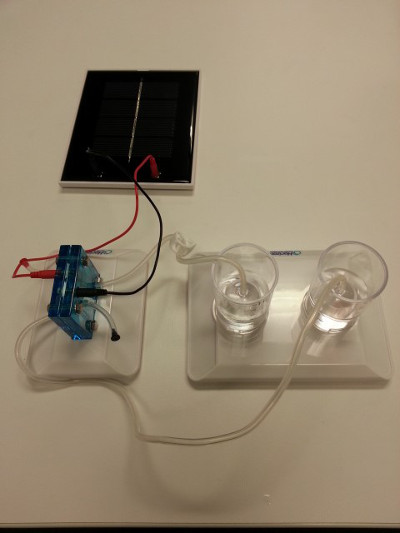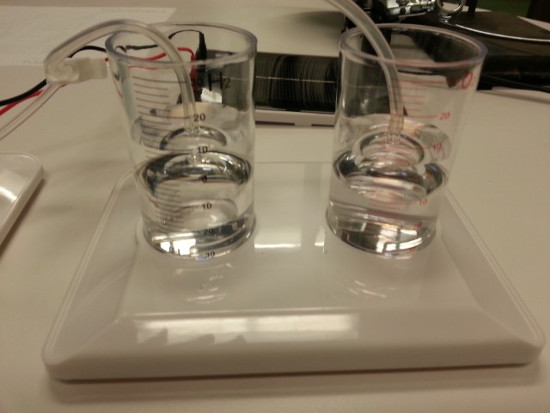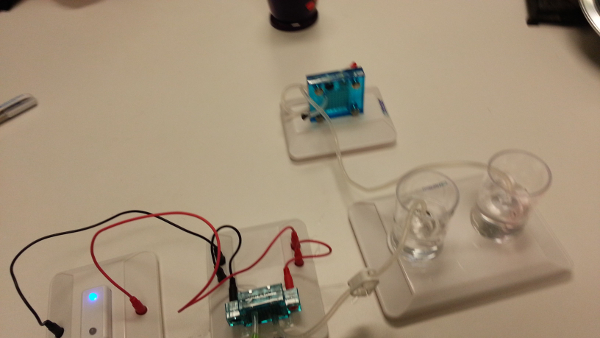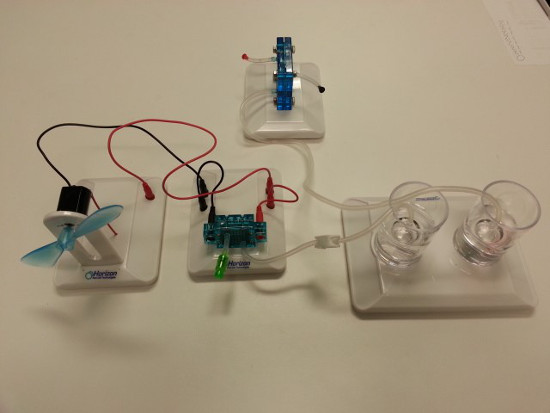Pilas de combustible de membrana de intercambio protónico
Visión general
Fuente: Laboratorios de Margaret obrero y Kimberly Frye - Universidad de Depaul
Estados Unidos consume una gran cantidad de energía – el tipo actual es aproximadamente 97500 trillones BTUs anualmente. La gran mayoría (90%) de esta energía proviene de fuentes de combustible no renovable. Esta energía se utiliza para la electricidad (39%), transporte (28%), industria (22%) y residencial/comercial (11%). Como el mundo tiene una cantidad limitada de estas fuentes no renovables, los Estados Unidos (entre otros) es expandir el uso de fuentes de energía renovables para satisfacer las necesidades de energía en el futuro. Una de estas fuentes es el hidrógeno.
Hidrógeno se considera una fuente potencial de combustible renovable, porque cumple varios criterios importantes: está disponible nacionalmente, tiene pocos contaminantes nocivos, la eficiencia energética y de fácil aprovechamiento. Mientras que el hidrógeno es el elemento más abundante en el universo, sólo se encuentra en forma compuesta en la tierra. Por ejemplo, se combina con el oxígeno en el agua como H2O. Para ser útil como un combustible, debe ser en forma de gas de2 H. Por lo tanto, si el hidrógeno va a usarse como combustible para los coches u otros aparatos electrónicos, H2 debe hacerse primero. Thusly, hidrógeno es a menudo llamado un "portador de energía" en lugar de un "combustible".
Actualmente, la manera más popular para hacer2 H del gas es de los combustibles fósiles, a través de reformado con vapor de hidrocarburos o de gasificación de carbón. Esto no reduce la dependencia de combustibles fósiles y energía intensivo. Un método menos usado es por electrólisis del agua. Esto también requiere una fuente de energía, pero puede ser una fuente renovable, como el viento o energía solar. En la electrólisis, agua (H2O) se divide en sus componentes, el hidrógeno (H2) y gas de oxígeno (O2), a través de una reacción electroquímica. El gas de hidrógeno hizo través del proceso de electrólisis se puede utilizar entonces en una celda de combustible de membrana de intercambio de protones (PEM), generando una corriente eléctrica. Esta corriente eléctrica puede usarse para alimentar motores, luces y otros dispositivos eléctricos.
Procedimiento
1. usando el electrolizador para producir Gas de hidrógeno
- Configurar el electrolizador (figura 3).
- Configurar las botellas de colección de gas, asegurándose de que el nivel de agua destilado en el cilindro exterior está en la marca 0 (figura 4).
- Conectar el electrolizador a las botellas de colección de gas (figura 5).
- Conectar un panel solar para el electrolizador mediante hilos puente y exponga a la luz directa sol (fig
Resultados
Durante el procedimiento de electrólisis, gas hidrógeno y oxígeno se generan una vez que el panel solar está conectado y expuesto a la luz solar. Tarda aproximadamente 10 min para generar suficiente gas de2 H para llenar el cilindro interno (tabla 1). Tenga en cuenta que hay dos veces más H2 generado como O2, como se ve en la ecuación balanceada:
2 H2O(l) → 2 H2.g + O2.g
Aplicación y resumen
Hidrógeno es un combustible flexible. Puede ser producido in situ en pequeñas cantidades para uso local o en grandes cantidades en una instalación centralizada. Entonces, el hidrógeno puede utilizarse para producir electricidad con sólo agua como subproducto (siempre que una fuente renovable de energía, como una turbina de viento, se utilizó para generar el gas hidrógeno). Por ejemplo, en Boulder, Colorado, el proyecto de Wind2H2 tiene turbinas eólicas y paneles solares conectados a electrolizadores que producen...
Saltar a...
Vídeos de esta colección:

Now Playing
Pilas de combustible de membrana de intercambio protónico
Environmental Science
22.0K Vistas

Identificación del árbol: Cómo utilizar una clave dicotómica
Environmental Science
81.1K Vistas

Encuesta sobre árboles: Método de muestreo de cuartos centrados en puntos
Environmental Science
49.4K Vistas

Uso de SIG para investigar silvicultura urbana
Environmental Science
12.6K Vistas

Biocombustibles: Producción etanol a partir de material celulósico
Environmental Science
53.1K Vistas

Pruebas para alimentos modificados genéticamente
Environmental Science
89.6K Vistas

Turbidez y sólidos totales en aguas superficiales
Environmental Science
35.8K Vistas

Oxígeno disuelto en aguas superficiales
Environmental Science
55.7K Vistas

Nutrientes en ecosistemas acuáticos
Environmental Science
38.8K Vistas

Medición de ozono troposférico
Environmental Science
26.4K Vistas

Determinación de NOx en los gases de escape de los automóviles mediante espectroscopia UV-VIS
Environmental Science
30.0K Vistas

Análisis de plomo en el suelo mediante espectroscopia de absorción atómica
Environmental Science
125.3K Vistas

Análisis de carbono y nitrógeno en muestras ambientales
Environmental Science
29.4K Vistas

Análisis de nutrientes del suelo: Nitrógeno, fósforo y potasio
Environmental Science
215.7K Vistas

Análisis de poblaciones de lombrices en el suelo
Environmental Science
16.5K Vistas
ACERCA DE JoVE
Copyright © 2025 MyJoVE Corporation. Todos los derechos reservados
